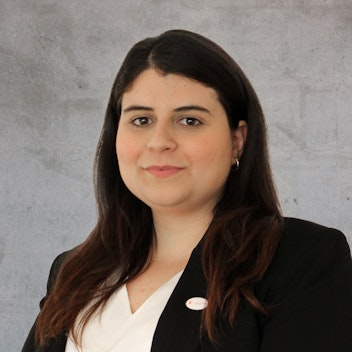
Re-thinking Political Secularism: The Multiculturalist Challenge
 Katherine Arena
Katherine Arena
Minority adolescents in Estonia show a tendency to migrate after High School to obtain their higher education. This is connected to cultural imaginaries and the desire to be accepted by the society they live in, therefore the change of surroundings and thus a change of society seems a mutually beneficial and viable solution.
Katja is a nineteen-year-old, living in Narva, the border city of Estonia and Russia. She is in her last year of school and will graduate soon. The same goes for Pasha, he too lives in Narva and goes to the same school. The main language of instruction is Russian and in theory, a number of subjects should be taught in Estonian. The reality however is that most teachers are native Russian speakers and therefore the standard of Estonian when delivering lessons is poorer.
Estonia hosts a great number of Russian speakers; With an overall population of around 1,330,000 people, of whom 322,700 identify Russian as their ethnic nationality, Russophones are the greatest minority group in Estonia - especially in the border region, Ida Viiruma, where Russian speakers form the major part of the population. However, Russian is not recognised as an official language of the state and therefore the options for higher education being available in Russian are very few at most.
The territory of today’s Estonia was occupied by various powers throughout the history. A short period of independence lasted from 1920 to 1940, before the USSR incorporated the country once again. In 1991 Estonia regained its independence, becoming a sovereign state and since 2005, Estonia has been part of the EU.
The switch from the majority to a minority group in 1991 was an immense transition for Estonia’s the Russian community, especially as the public discourse and policy placed much emphasis on the new majority position of the Estonians. There were and still are two integration processes happening at the same time in Estonia, the first being the integration of the Russian speakers into Estonian society and second, the joint integration into an English-speaking Europe. Thus, both ethnic groups are adapting their cultural practices and finding a new place in wider society.
Both, Katja and Pasha, are native Russian speakers, as are both their parents, grandparents and all their friends. Just as over 95% of the people living in Narva are. Nevertheless, Katja and Pasha feel like minorities in their daily life. The first moment they will be able to freely decide to change or react to their minority status, will be after their graduations from school. Katja, as well as Pasha, want to study and obtain higher education to have better job opportunities. Yet, after that, their future plans will take completely divergent paths.
Being a minority is strongly connected to stereotypes and prejudices with members defined or defining themselves through the group they belong to. Often the repute of a minority group is rather negative, be it a realistic aspect or just a symbolic threat. When they are just developing their identity, young people especially don’t feel like they belong to the country they were born in, if they are part of a minority. Members of ethnic minorities show a greater need to explore their ethnic identity than their peers from majority groups.
Katja and Pasha both imagine a better future, somewhere they feel more accepted and can be happier as a result. They both decided to take a big step and to move, to find new homes with new possibilities and maybe a new part of themselves.
Katja will move to St. Petersburg, to a place where she finally can live in a fully Russian community, study in her native language and feel accepted. She is not sure if she ever wants to return to Estonia. She sees many similarities between herself, and people living in Russia and would gladly change her Estonian nationality for a Russian one. She has chosen St. Petersburg because she wants to study in her native language which she is nevertheless proud of. Furthermore, her partner is moving there too.
Pasha hopes to become part of the Estonian society and is moving to Tartu with aspirations of identifying more as an Estonian, although he feels very European, rather than simply Russian or Estonian. Through his studies he hopes to improve his language skills in Estonian to be more accepted by the majority. He likes Estonia and the fact that he lives there, he calls it a “small but good country” in Europe.
Minority group members in this age bracket in Estonia, show a greater interest in moving away for their higher education and these plans concern both internal, as well as international migration. One factor of this tendency is connected to the negative perception of the major group and one’s own search for identity. Many factors play a role in the migration aspirations of minorities. In the very specific case of high school students who decide to move for their higher education, cultural imaginaries play a crucial role. Being bound to a place while not feeling fully part of it, builds up a desire and imagination of how it could be somewhere else. These cultural imaginaries contribute to the decision to move, as the adolescents imagine themselves to find a place where they fit better.
Migration aspirations can help young minority group members to overcome stereotypes and explore their own identities, connected to their own group and to others. In a period of exploring and searching, the change of surroundings or simply the imagination of it, is an emotional resource for minority adolescents.
Katja´s and Pasha´s stories are taken from a 2020 Estonian study, in which students in their final year from eight different high schools took part. The two cases presented were both from the same school, fully anonymised and the names are fictional. This project has received funding from the European Union's Horizon 2020 research and innovation programme under the Marie Skłodowska-Curie grant agreement No. 812764

This content is licensed under a Creative Commons Attribution 4.0 International license.